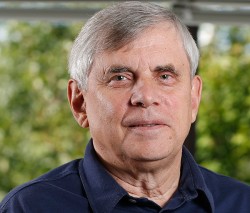
Centennial Professor Alexander Ol’shanskii has been named a fellow of the American Mathematical Society(AMS) in recognition for his contributions to the field of group theory, a branch of mathematics that provides a powerful way of studying geometrical objects through their symmetries. It can be used to analyze various physical systems, ranging from hydrogen atoms to crystals, and so has many applications in physics and chemistry.
The AMS Fellows program recognizes members who have made “outstanding contributions to the creation, exposition, advancement, communication and utilization of mathematics.” Among the goals of the program are to create an enlarged class of mathematicians recognized by their peers for their distinguished contributions to the profession.
[rquote]In Ol’shanskii’s career, he has successfully solved several famous problems in group theory.[/rquote] He is especially well known for disproving a long-standing conjecture posed by the famous mathematician John von Neumann that stood unsolved for 50 years. He did so by dusting off and adapting a diagrammatic technique developed by American mathematician Egbert van Kampen in the 1930’s. He later employed this same technique to reduce the proof of another well-known problem in group theory called the Burnside problem from 300 pages to 32 pages.
Ol’shanskii joined the Vanderbilt faculty in 1999 and has established rich collaborations with other members of the math department’s group theory research group. Frequent collaborators include Centennial Professor Mark Sapir and Professor Denis Osin.
Ol’shanksii is the ninth Department of Mathematics faculty member to be named an AMS fellow. The others are Professors Akram Aldroubi, Dietmar Bisch, Mark N. Ellingham, Edward Saff, and Glenn Webb; Distinguished Professor Emeritus Bjarni Jónsson; Stevenson Distinguished Professor Vaughan F.R. Jones; and Centennial Professor Mark Sapir.